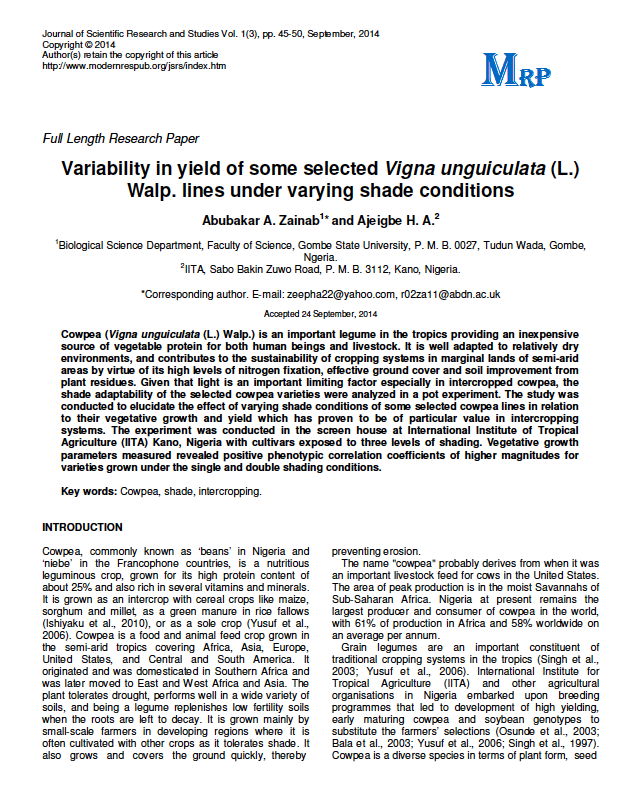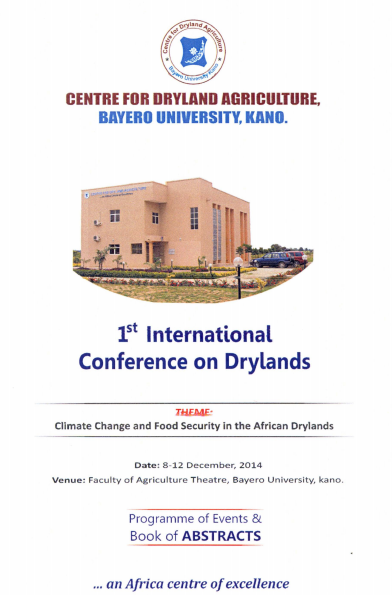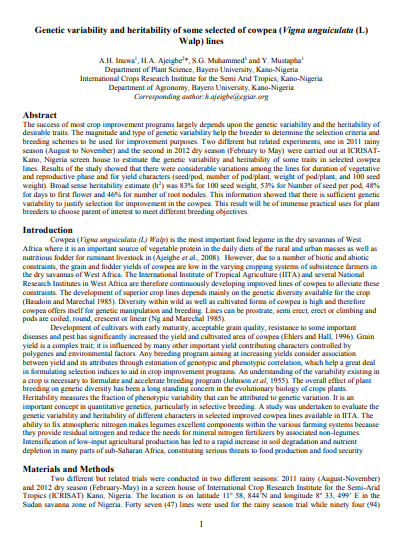Variability in yield and vegetative growth of some selected cowpea [Vigna unguiculata (L.) Walp.] lines under varying shade conditions
This study was conducted to elucidate the effect of varying shade conditions of some selected cowpea lines in relation to their vegetative growth and yield. The study revealed positive phenotypic correlation coefficients of higher magnitudes for varieties grown under the single and double shading conditions.
Project: TLII
File type: PDF (235.20 KB)
Response of some groundnut varieties to Alectra vogelii infestation in northern Nigeria
This paper presents the results of a field trial conducted in northern Nigeria in 2014 during the rainy season to evaluate the response of 11 local and improved groundnut genotypes to natural infestation of Alectra vogelii.
Project: TLII
File type: PDF (728.02 KB)
Genetic variability and heritability of selected cowpea (Vigna unguiculata (L) Walp) lines
This paper presents the results of two different but related experiments in northern Nigeria, one in the 2011 rainy season and the second in the 2012 dry season, to estimate the genetic variability and heritability of traits in selected cowpea lines.
Project: TLII
File type: PDF (127.73 KB)
Potential of cowpea (Vigna unguiculata L.) for dry season seed and fodder production in Sahelian sandy soil of Niger
Recent surge in dry cowpea seed price, grain and fodder demand in Niger Republic has resulted in the search for appropriate cultivars for dry season production for seed, grain, and fodder. Studies have found that dry season cowpea production stands first as an alternative for farmers to increased income, grain, seeds, and fodder and enrich the soil for the next rainy season.
Project: TLII
File type: External site
Improvement in grain and fodder yields of cowpea genotypes representing four decades of breeding in the Nigerian Sudan savannas
This paper presents the findings of a field study conducted to determine the rate of genetic improvement in the grain and fodder yields of cowpea genotypes developed in the Nigerian Sudan savannas from 1970 to 2004.
Project: TLII
File type: PDF (312.71 KB)
Potential of triple and double cropping with and without irrigation in the Sudan and Northern Guinea Savanna Zones of West Africa
The rapid increase in population and consequent pressure for food is driving agriculture towards greater intensification in West Africa. Various options including double and triple cropping, with and without irrigation, have to be employed for intensification to succeed. Double and triple cropping options with irrigation in Sudan and Sahel savannas and without irrigation in the northern Guinea savanna zones of West Africa were explored as possible options for intensification in these areas.
Project: TLII
File type: External site





